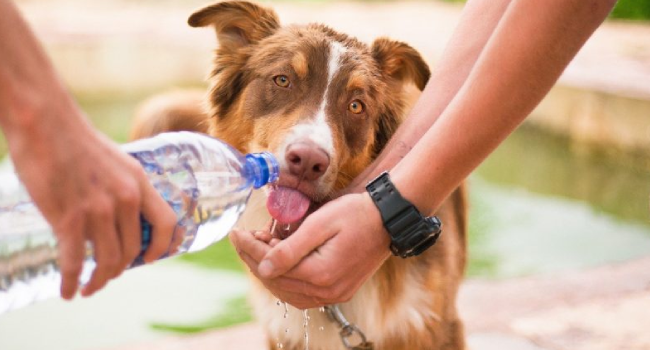As dogs age, they need a little extra love and care. Older canines often suffer from a variety or health issues at some point or another; arthritis or hip dysplasia are quite common. In order to keep your dog healthy, it’s best to start a specific age-appropriate diet and exercise regiment. Even if your old girl is slowing down, she can still have a happy, fulfilling life.
Instead of waiting until last minute to check for health problems, get a head start by considering your dog’s potential health issues in the future. Many breeds suffer from the same health problems as they age. For example, golden retrievers and German shepherds suffer from hip dysplasia. If you can pinpoint possible ailments, you can be aware of those issues earlier on to make health adjustments and tuned exercises specifically for your dog.

Here are 8 tips for keeping your aging canine fit and healthy.
- Go on 10 to 15 minute walks. All dogs need exercise, big and small, young and old. Although an older dog will be much slower paced, they still need the activity to keep their joints moving. Because older dogs commonly have arthritis or physical limitations, it is best to start small with 10 minutes and go up to 15 minutes at a time. If you notice your dog is slowing down or heavily panting during the walk, cut it short.
- Take your dog swimming. Swimming is a great exercise for water-lovers. It’s also a great activity that eases pain and exercises joints. The benefits go on: it’s relaxing and comfortable for aging dogs. Just like walking, allow for short periods of time.
- Encourage indoor stair-stepping. Many homes have stairs. If your dog is still able, walk them up and down the stairs for a few rounds. If they need some encouragement, place treats at the top of the stairs vice versa. Easy indoor exercise!
- Buy dog food with DHA and EPA. For dogs with arthritis and joint pain, fatty acids are beneficial. Glucosamine and chondroitin are great for these issues.
- Brush your dog’s teeth. Same as humans, plaque buildup, gum disease, and tooth decay are common problems for dogs with bad teeth. The simple act of teeth brushing can improve teeth health immensely. Dental care bones and toys can help with teeth cleanliness as well.
- Add fiber to their diet. Constipation is something older dogs face. Make sure to encourage healthy bowels with added fruits, vegetables, and wheat fibers. Green beans, broccoli, bananas, and apples are great sources of fiber.
- Play simple games. To keep your pooch active, try some simple games for fun. For example, hide treats and let your dog find them, play soft tug-of-war, or fetch. For the older dog with mobility issues, throw the object only a few feet away – just enough to get your dog moving.
- Get the vet’s opinion. As always, check with your vet for the best health plan for your dog. They are professionals and know what’s best for your aging pup. They will give you specific exercises and diet plans. If you notice any health changes, call the vet as soon as possible.
To ensure a long and happy life for your best bud, use these tips to keep your dog in tip-top shape. Simple exercises, brain work, and overall hygiene will be sure to keep your dog on its toes. Remember to have fun creating a health plan and enjoy the extra time with your pooch. A happy dog makes for a happy home.


